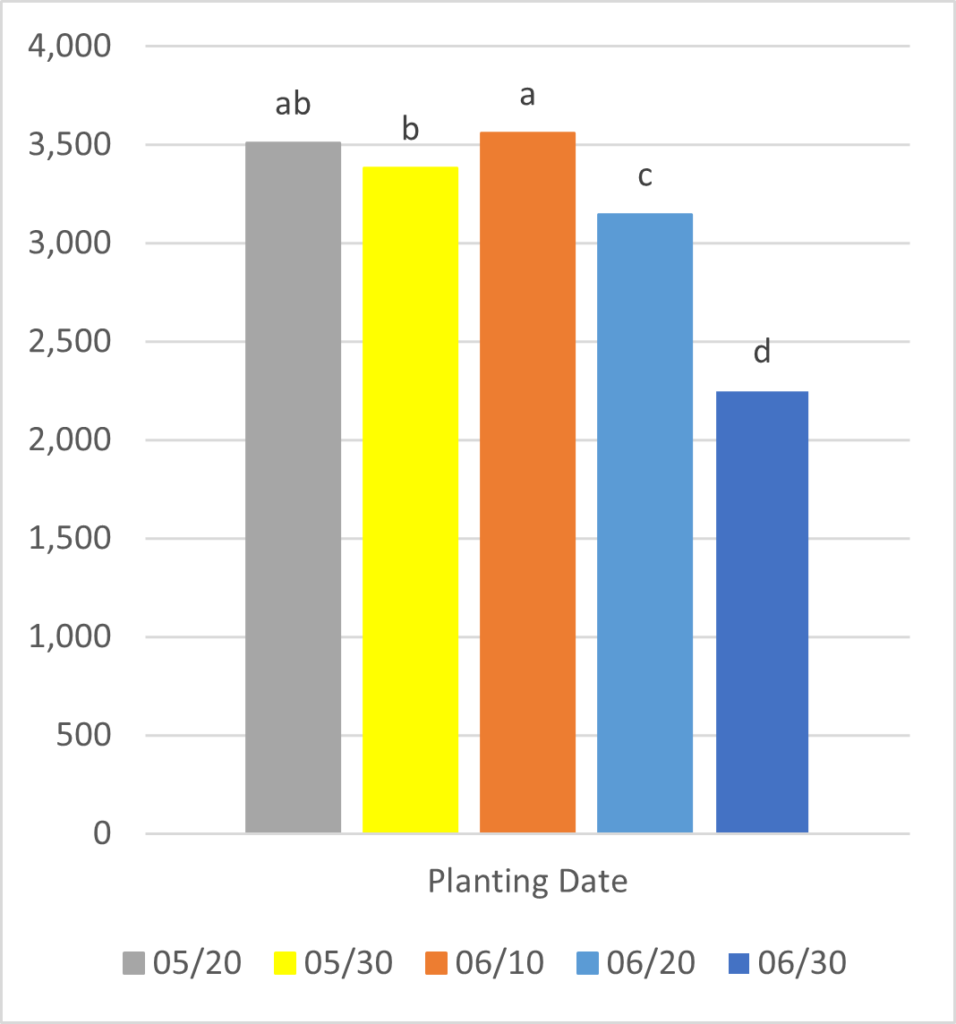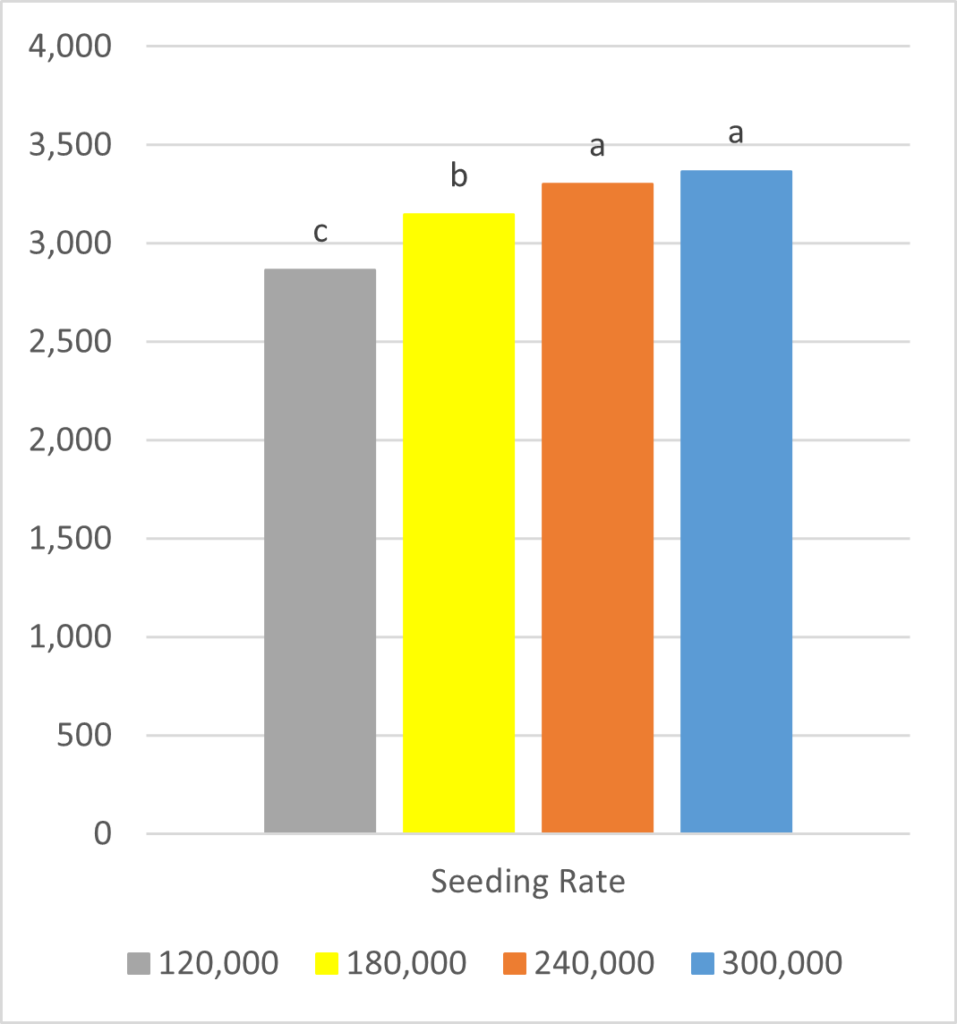Current production guidelines have separate recommendations for planting dates and seeding rates, while current seeding rate recommendations varies with row width. Growers typically plant beans earlier in lower crop heat units (CHU) regions, to reduce the risk of damage from fall frost. Many people believe that our growing season is increasing over time, which will lead to earlier planting dates. Growers are planting new bean market classes in narrower rows, while plant breeders are changing plant architecture to better fit narrow row widths. The interaction of these factors, however, is poorly understood. The purpose of this study was to determine the optimal seeding date and plant population for two small seed dry bean cultivars planted in 38 cm rows, across multiple environments in Ontario.
Five small plot studies tested navy (cv. Rexeter) and black (cv. Zorro) beans in 38 cm rows in Ridgetown and Exeter ON. The four seeding rate treatments were 120,000; 180,000; 240,000 and 300,000 seed/ha (approximately 48,500; 73,000; 97,000; and 121,500 seeds/ac). The five planting dates were 05/20, 05/30, 06/10, 06/20 and 06/30. Measurements included plant growth and development at 40 and 60 days after planting, and crop yield.


Zorro had 3% higher yield than Rexeter navy bean, over the five studies (data not shown). The optimum planting date over all studies was June 10. Other planting dates, particularly later dates, had lower crop yield, shorter plants and smaller seed. A yield loss of 37% was measured for the June 30 planting date, versus June 10, while the May 20 planting date resulted in less than 2% yield loss. Crop yield was reduced by 7% at 180,000 seed/ha and 15% at 120,000 seed/ha, compared to the highest seeding rate. Seed size and plant height were not affected by seeding rate.